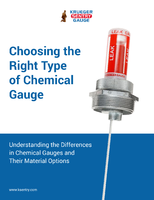Motion Sensors / Detectors / Transducers
Triaxial g-Sensor provides digital output.
Share:
Press Release Summary:
Packaged in 2 x 2 x 0.98 mm LGA housing, Model BMA220 provides 4 programmable measuring range from ±2 to ±16 g. Integrated evaluation electronics recognize specific motion patterns, eliminating need for external microcontroller. Algorithms for motion recognition run internally on ASIC; therefore, sensor can autonomously and automatically distinguish between random movement, change in spatial position, single tap, double taps, and between slow and fast changes in movement.
Original Press Release:
Bosch Sensortec Introduces the Smallest BMA220 g-Sensor in LGA Housing to the Global Market
Triaxial digital sensor with dimensions of 2 x 2 mm
The BMA220 digital sensor from Bosch Sensortec is the smallest digital acceleration sensor in LGA housing in the world - it measures only 2 mm x 2 mm x 0.98 mm, including LGA housing. For the second time, Bosch Sensortec, the Bosch subsidiary specializing in sensors for consumer electronics, has emerged as the pace setter for technological innovation: In 2007, Bosch Sensortec was the first to successfully pack sensors in LGA housings measuring only three millimeters - until then, the standard had been four millimeters. However, the unbroken trend towards miniaturization in mobile consumer electronics demands an even greater reduction in surface area: The new generation of 2 x 2 LGA housings occupies 79% less surface area on a circuit board than that required for the 6 x 6 sensor that marked Bosch Sensortec's market debut in 2005.
Reduced dimensions, increased functionality
The reduced dimensions are not linked to a loss in functionality or quality:
The BMA220, which has already been delivered in large quantities to OEM customers, is a fully fledged, triaxial g-sensor with digital data output, four programmable measuring ranges from ±2 g to ±16 g, and integrated evaluation electronics for recognizing specific motion patterns. For use in pedometers (step counters), Bosch Sensortec wrote specific evaluation algorithms tailored to the BMA220, a service that substantially shortened development time for the end device. Other applications include 3D spatial orientation in mobile telephones, PDAs and game controllers, as well as targeted reactions to movements, such as the ability to mute a ring tone by
tapping twice on the mobile phone.
ASIC on the sensor saves battery power
The evaluation electronics integrated in the sensor obsoletes the need for intensive signal evaluation by the host application's microcontroller. This greatly reduces energy use in the mobile device, which significantly extends battery life.
In the BMA220, the algorithms for motion recognition run internally on an ASIC; therefore, the sensor can autonomously and automatically distinguish between a random movement, a change in its spatial position, a single tap, double taps, and between slow and fast changes in movement.
The motion recognition parameters can be programmed by the customer.
The sensor signals the availability of new data at the interrupt output; at the same time, the sensor also outputs them in conditioned form to the digital interface. This means that end product developers no longer have to grapple with complex raw 3 axis acceleration data from the internal micromechanical readings recorder.
About Bosch Sensortec
Bosch Sensortec GmbH, a 100 percent subsidiary of Robert Bosch GmbH, offers micromechanical sensors and their application for consumer electronics, security systems and logistics. Its product portfolio to date includes triaxial acceleration sensors as well as pressure sensors. The company was founded in early 2005 and is headquartered near Reutlingen to the south of Stuttgart (Germany). For more information about Bosch Sensortec, visit www.bosch-sensortec.com.
About Bosch
Bosch has been active in the field of MEMS since 1988, being one of the pioneers in this technology. Today, hundreds of engineers of the Bosch Group work in the field of MEMS. A wide selection of products - from pressure and acceleration sensors to yaw-rate sensors - is manufactured for the automotive industry. Annual production at Bosch is more than 200 million sensors.
The Bosch Group is a leading global supplier of technology and services. According to
preliminary figures, some 270,000 associates generated sales of roughly 38 billion euros in the areas of automotive and industrial technology, consumer goods, and building technology in fiscal 2009. The Bosch Group comprises Robert Bosch GmbH and its more than 300 subsidiaries and regional companies in over 60 countries. If its sales and service partners are included, then Bosch is represented in roughly 150 countries. This worldwide development, manufacturing, and sales network is the foundation for further growth. Each year, Bosch spends more than 3.5 billion euros for research and development, and applies for over 3,000 patents worldwide. With all its products and services, Bosch enhances the quality of life by providing solutions which are both innovative and beneficial.
The company was set up in Stuttgart in 1886 by Robert Bosch (1861-1942) as "Workshop
for Precision Mechanics and Electrical Engineering." The special ownership structure of
Robert Bosch GmbH guarantees the entrepreneurial freedom of the Bosch Group, making it
possible for the company to plan over the long term and to undertake significant up-front investments in the safeguarding of its future. Ninety-two percent of the share capital of Robert Bosch GmbH is held by Robert Bosch Stiftung GmbH, a charitable foundation. The majority of voting rights are held by Robert Bosch Industrietreuhand KG, an industrial trust. The entrepreneurial ownership functions are carried out by the trust. The remaining shares are held by the Bosch family and by Robert Bosch GmbH. Additional information can be accessed at www.bosch.com.




